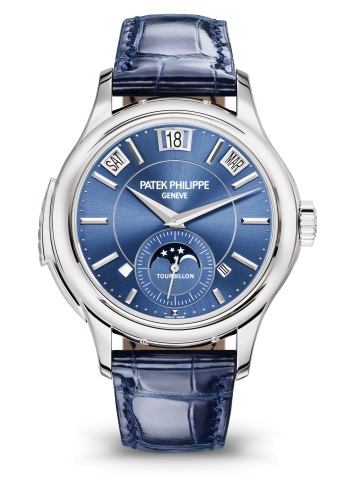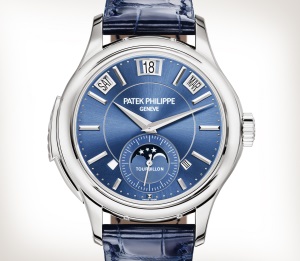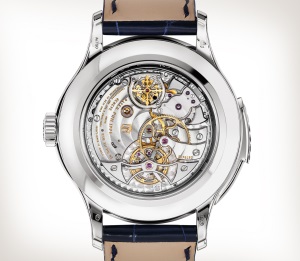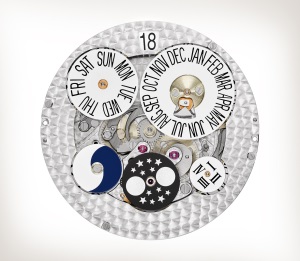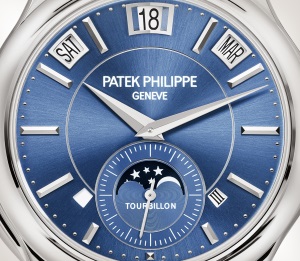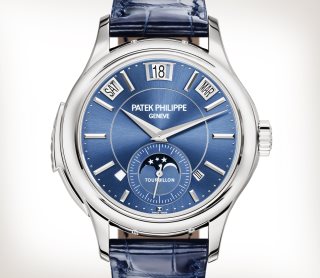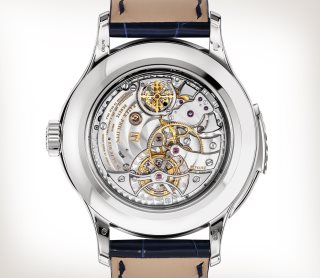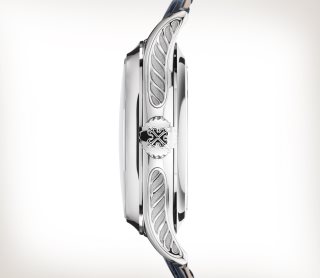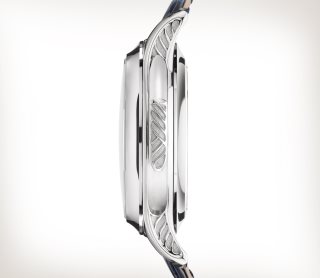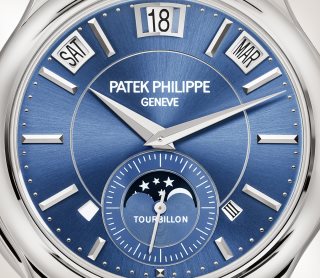Introduction
5207G
-
Grand Complications
Manual winding
The only watch in the current Patek Philippe collection to unite a minute repeater, a tourbillon and an instantaneous perpetual calendar with aperture displays, the Reference 5207 Grand Complication now debuts in a white-gold case embellished with hand engraving and complemented by a blue sunburst dial. This masterpiece of acoustics and micromechanics houses a manually wound caliber composed of 557 individual parts.



